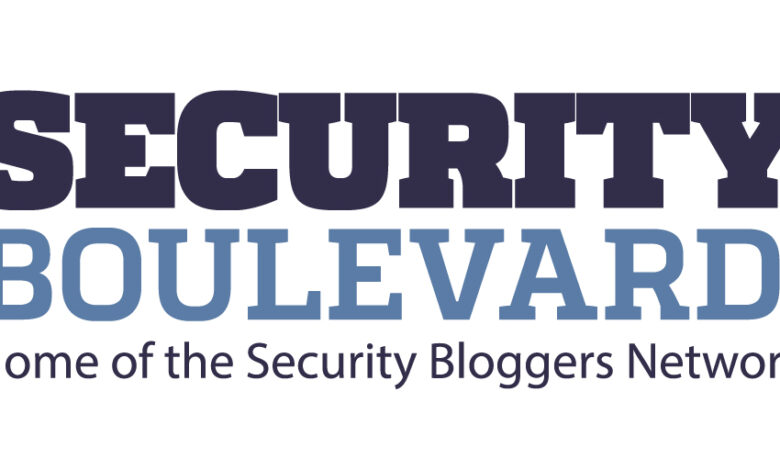10 Ways K12 School Districts Can Boost Cybersecurity for the 2024-2025 School Year

When the school year is winding down, vacations are very front of mind. And yet, the end of one academic year is also a great opportunity for administrators in any K12 school district to take a closer look at their cybersecurity plans and priorities for August and September.
In fact, cybersecurity remains at the top of priority lists for edtech leaders at K12 school disctricts, according to the 2024 State of Edtech District Leadership report from CoSN.
Among the report’s findings for school districts:
- 99% are taking measures to improve cybersecurity protections
- 72% are requiring two-factor authentication in 2024, compared to 40% in 2022
- 53% now have an incident response plan compared to a third (34%) in 2022
- 77% are conducting IT staff training and 73% end-user training
It’s great news that K-12 school districts are making giant leaps in these safety measures. Some of the less encouraging updates include:
- Just 25% have a dedicated cybersecurity team in place
- 58% are investing in cybersecurity products and services
- 50% have a cybersecurity plan
We expect these numbers to increase over time, but all school districts should have a plan for cybersecurity. A cybersecurity team might be a good idea too, depending on the size of the district, but there might not be the resources for that. And while budgetary issues are very real, districts should be thinking about purchasing cybersecurity protections.
Perhaps most concerning though is that, according to the report, most districts do not perceive themselves to be at high risk for major cyber threats; in fact, 38% say they are low risk for ransomware attacks— the most popular type of school cyber attack.
Not thinking the schools in your district are at high risk for cyberattacks is wild because it seems every week there is a school in the news for some type of cyber attack.
Whatever the state of cybersecurity at your school or school district, we wanted to put together a list of actions for edtech leaders to consider when preparing for the coming school:
1. Review your current cyber framework
A cybersecurity framework is like a roadmap that helps schools identify, protect, detect, respond to, and recover from cyber threats.
There are many frameworks available, but three popular options include:
- NIST CSF
- CIS Controls
- K12 SIX Essential Protections
NIST CSF is the most comprehensive but can be complex for smaller schools. CIS Controls offers different tiers based on resources, while K12 SIX is specifically designed for schools and is easy to implement.
Ultimately, the best choice depends on your school district’s size and expertise. Regardless of the framework you pick, you have to stick to the best practices consistently and adapt according to the resources that are available to you.
Remember, frameworks are just tools to be used alongside other measures like staff training and monitoring for the best cybersecurity defense – any step you take towards improving cybersecurity is a step in the right direction.
2. Try a cyberclinic
Doctors aren’t the only professionals who receive hands-on practical training before they start practicing. Schools can benefit from cybersecurity clinics where staff cab gain real-world experience under the guidance of experts. This helps schools get free assessments and security improvements.
You can get your school involved by finding a faculty member to develop the program and generate support, ideally across different departments (e.g., legal, business). There are many different formats, ranging from a semester-long course to a shorter project integrated into a class, a club or internship program, or even paid internships.
Look for small businesses or local government agencies that could benefit from your help to partner with and secure your funding through grants and donations to get started.
Starting a clinic takes time and effort, but the payoff can be big for both your school and the community.
3. Organize a cyber response team
To protect themselves against growing cyber threats, schools districts should create a cyber response team. This team would consist of IT staff, legal counsel, communication specialists, and potentially HR and external vendors.
The team’s first order of business is to understand the district’s vulnerabilities for specific schools through a risk assessment (CISA offers them for free). Then, they should develop a plan that outlines how to identify, contain, recover from, and report a cyber incident. This plan should include a communication strategy to keep parents, teachers, and students informed.
The team will also implement tools to monitor the network for suspicious activity and investigate any potential incidents. If a cyber attack occurs, the team will take steps to contain it, eliminate the root cause, and restore affected systems from backups.
Finally, the team will conduct a review after an incident to identify areas for improvement and update their plan accordingly. There are multiple templates and resources online to get you started with your cyber response plan.
According to the 2024 State of Edtech District Leadership report, 53% of school districts had an incident response team in place. If you’re looking for a place to start, check out this post.
4. Check compliance
It’s important for schools to regularly check compliance with key data privacy laws: FERPA, COPPA, and CIPA.
FERPA protects the privacy of student education records. Schools that receive federal funding need to comply with FERPA. Schools need to inform parents about their rights under FERPA and get their consent before disclosing student information.
COPPA protects the privacy of children under 13 online. Schools need to be careful when collecting personal information from students under 13 and need to get verifiable parental consent.
CIPA protects children from inappropriate online content. Schools that receive discounts for internet access need to implement measures to block or filter out obscene or harmful online content. Schools also need to educate students on responsible online behavior.
Compliance not only keeps students safe; it also protects schools from potential reputational damage or regulatory fines.
5. Consider awareness training
Sometimes, your best defense is education. Students readily share information online, making them susceptible to phishing scams and social engineering tactics. Cybersecurity training helps them identify red flags and avoid falling victim to these attacks. Similarly, educators may unknowingly click malicious links or download malware hidden in seemingly legitimate emails. Training equips them to recognize these threats.
Effective training goes beyond technical knowledge. It fosters a culture of cybersecurity awareness within the school community. Students learn responsible online behavior, like creating strong passwords and avoiding suspicious websites. Staff members become vigilant about data security best practices. This collective awareness creates a stronger defense against cyber threats and empowers students to become responsible digital citizens, preparing them for a world where online safety is paramount.
In the 2024 State of Edtech District Leadership report referenced earlier, the majority of school districts were participating in some sort of annual training for teachers, administrators, staff, and students, which is great news.
6. Apply for grants
Many schools struggle to afford the personnel and resources needed to effectively address cybersecurity threats. Luckily, there are cybersecurity grants to help cover the cost. These are financial awards from governments, organizations, and companies to help schools improve cybersecurity. Grants can be used to implement security technologies, train staff and students, develop security policies, and conduct security assessments.
Some of the grants available to schools include the State and Local Cybersecurity Grant Program (SLCGP), Tribal Cybersecurity Grant Program (TCGP), Amazon K12 Cyber Grant Program, IBM Education Security Preparedness Grants Program, and the FCC’s Schools and Libraries Cybersecurity Pilot Program.
You can use your grant to boost professional development for staff and students, integrate cybersecurity into the curriculum, implement endpoint security solutions, or implement necessary updates and patches.
7. Think about asking for students’ help
If you really want to boost cybersecurity from the ground up, it’s time to get the students involved. Students are often on the front lines of technology use in schools. They can report suspicious activity like phishing emails or malware attempts, helping to identify potential threats before they cause damage. They can also become valuable cybersecurity ambassadors, educating their peers about safe online behavior, password hygiene, and how to identify online risks.
In many cases, students are more familiar with the latest technologies and trends. They can provide valuable insights into potential vulnerabilities that staff might miss. It’s also a great opportunity for students to learn more about the exciting field of cybersecurity as a possible career venture in the future.
8. Consider new technologies (AI)
There’s never been a better time to look into new technologies that will boost your cybersecurity. Cybersecurity AI can analyze data rapidly, identify threats in real-time, and predict future attacks, which allow schools to respond swiftly and prioritize actions. AI can also reduce false alarms, improve decision-making, and detect unusual behavior that might signal a threat. For schools where students and teachers bring multiple devices onto the campus, AI will secure endpoint security for devices like laptops and smartphones.
It’s not an easy fix, however. You must ensure that AI complies with data privacy regulations and may need expert help integrating AI with existing systems. The cost of AI solutions can also be a hurdle. Despite these challenges, AI offers a promising future for school cybersecurity, and this needs to be considered.
9. Review current contracts of tools and think about consolidation
The complexity and time demands are driving a major shift in cybersecurity – consolidation. During one of our recent surveys, we found that 85% of respondents say they are actively looking to consolidate their security tools in the next year. The main reason? Improving their overall security posture.
Schools districts, with their limited resources, are prime candidates for consolidation. By reviewing current contracts and exploring options, they can streamline their security stack, free up IT staff time, and potentially improve their overall cybersecurity.
Schools are often targets of cyberattacks, but the very tools designed to protect them can create an even bigger burden.
The average organization we surveyed has 11.55 security tools in its arsenal. Managing this complex stack consumes an average of 4 hours and 43 minutes daily. The most significant time commitment goes to monitoring security platforms (52%), followed by patching vulnerabilities. These tasks pull IT staff away from other critical functions.
Schools are sometimes managing thousands of endpoint security agents across hundreds of devices. Keeping these agents updated creates a constant burden, with over half of respondents dealing with updates daily or weekly.
By reviewing current contracts and exploring consolation options, they can streamline their security stack, free up IT staff time, and potentially improve their overall cybersecurity at the same time.
10. Start the buying process for new tools ASAP
The best time to improve your cybersecurity posture is right now. Adding a new security tool takes an average of 4.22 months to become operational. In the fast-paced world of cyber threats, this delay can be dangerous. If you are juggling too many tools, struggling to get a big picture of your cybersecurity defenses, or simply unable to devote the time and resources you need to defend your school district, it’s time to consider some outside help.
By replacing multiple tools with a comprehensive suite that offers robust protection, you’ll instantly simplify management and improve your overall security posture. You’ll also free up the IT staff from constant updates and monitoring, giving them the time they need to focus on more strategic initiatives and student support. And if you’re considering Coro, we can also manage your full cybersecurity protection for you.
Schools are facing unprecedented challenges from cyber attackers, and our students deserve better protection. Whatever path you choose, let’s deliver stronger protection year after year for our schools. Hopefully these tips can help.
*** This is a Security Bloggers Network syndicated blog from Blog – Coro Cybersecurity authored by Kevin Smith. Read the original post at: https://www.coro.net/blog/10-ways-k12-school-districts-can-step-up-cybersecurity-for-the-2024-2025-school-year



